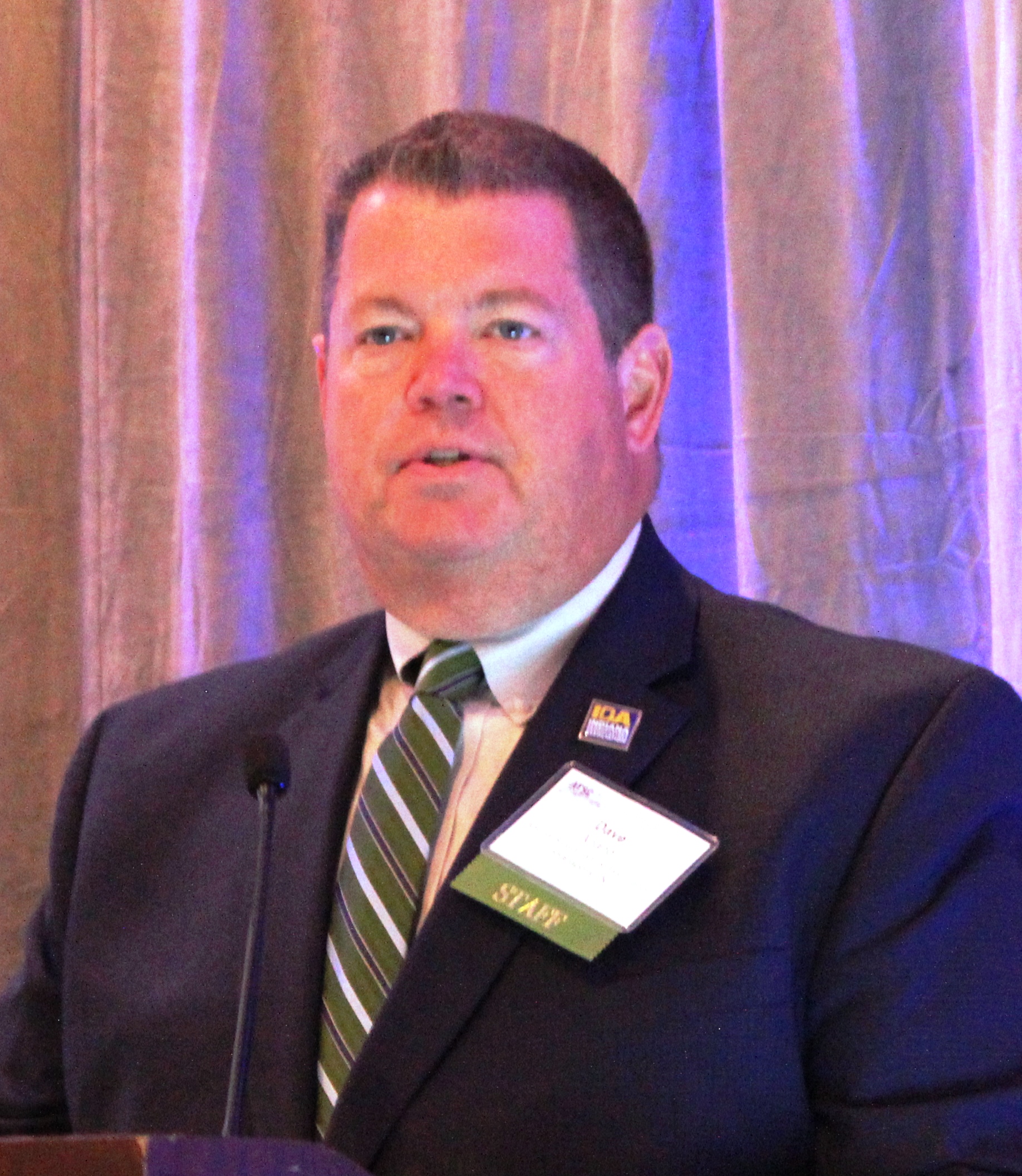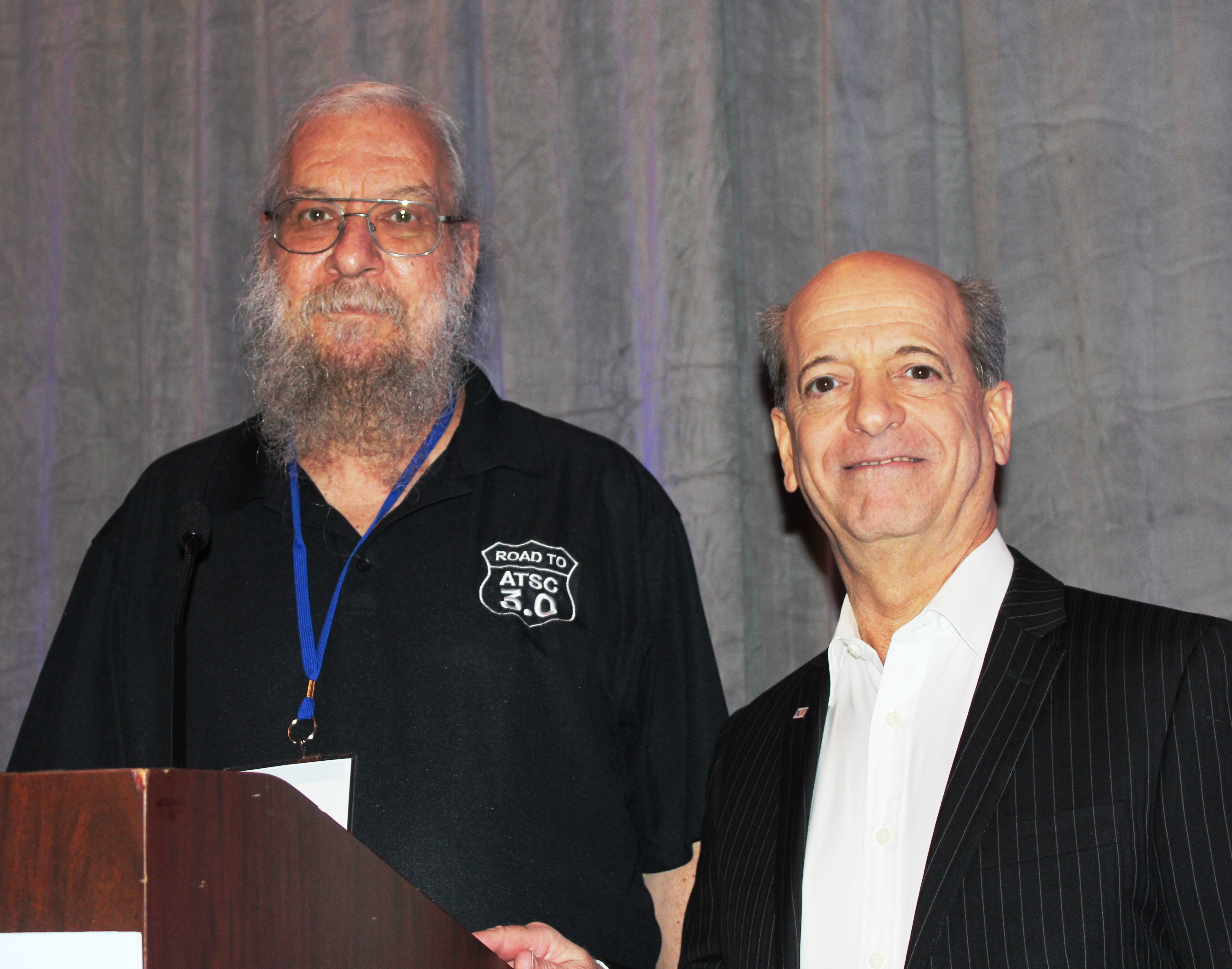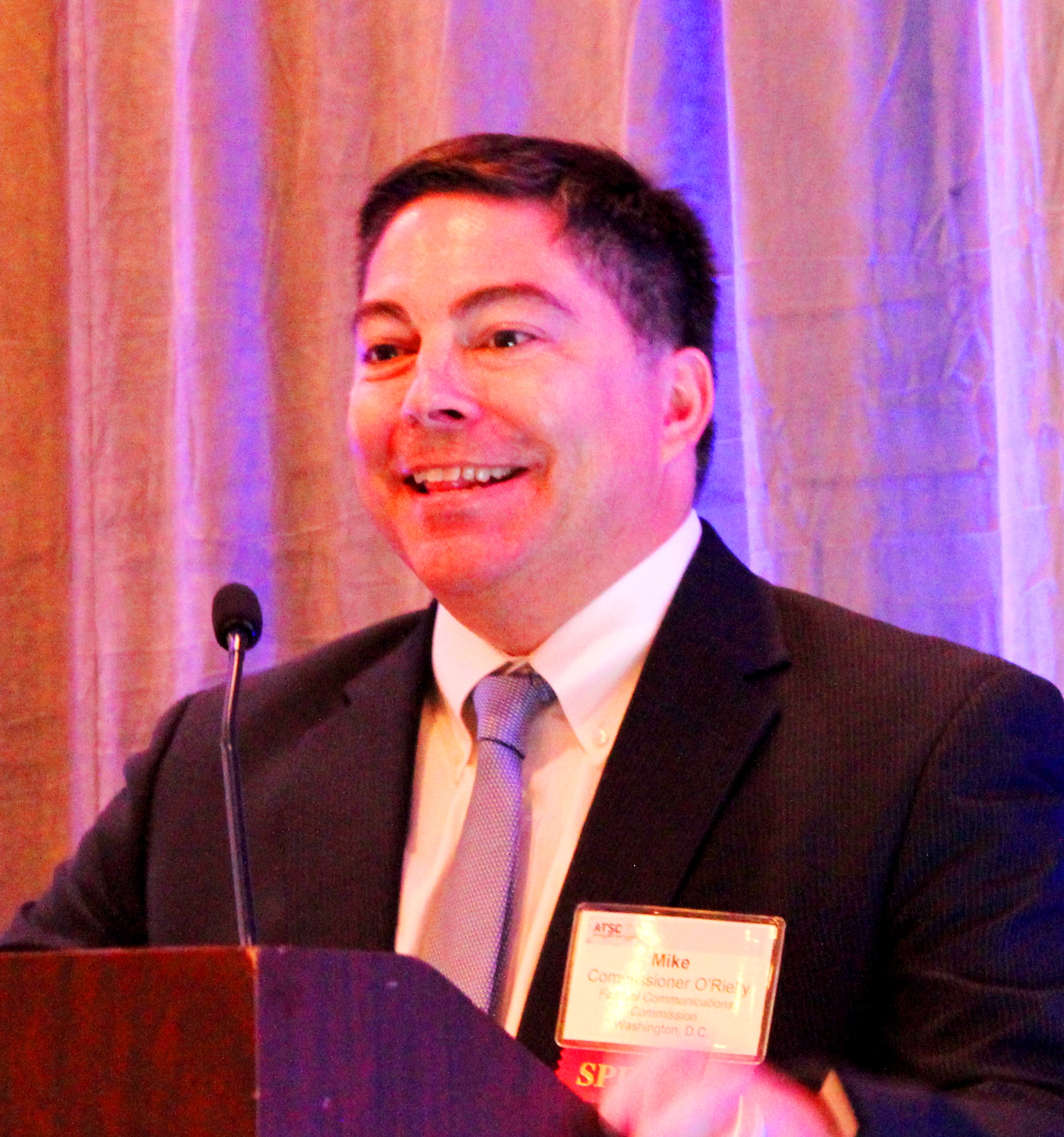'Road to ATSC 3.0' Makes Stop in Columbus
COLUMBUS, OHIO—When ATSC president Mark Richer launched the organization’s “Road To ATSC 3.0” campaign earlier this year, he observed that the television industry would be “embarking on the road trip of a lifetime.”
One of the stops on that “road” took place in a big way here June 27-28 with the arrival of the “Midwest Next-Gen TV Summit,” an event designed to bring information about the new DTV transmission standard to broadcasters who might not have had an opportunity to participate in the numerous ATSC 3.0 launch events at the NAB Show and elsewhere.
With the assistance of broadcasting associations from six states—Illinois, Indiana, Kentucky, Michigan, Ohio and Wisconsin—the ATSC brought together some of the top names in a program tailored for both station management and engineering contingents, with an agenda split between the nuts and bolts aspects of ATSC 3.0 and new business models that it could fuel.

The technical side was first, and after welcoming remarks by the executive director of the Indiana Broadcasters Association, Dave Arland, the day-and-a-half conference got down to business with a tag team presentation by the former chair of the ATSC technology group that developed the standard, Richard Chernock, and Skip Pizzi, NAB’s vice president of technology education and outreach. The duo described the genesis of the ATSC 3.0 standard, its inner workings, how it will allow broadcasters to offer a much wider range of services, what it will take to put 3.0 on the air, and even how adoption of the standard can fit in with the ongoing U.S. television spectrum repack.
TIME TO GET SERIOUS ABOUT ATSC 3.0
As well as describing technical aspects of ATSC 3.0, Chernock urged broadcasters to embrace the new standard and commit themselves to adopting it as soon as possible.
“Technology is continuing to accelerate and grow,” he said. “It’s almost an exponential curve and it’s going to keep on going [and] we’re used to television technologies that sit still for a long time.
Get the TV Tech Newsletter
The professional video industry's #1 source for news, trends and product and tech information. Sign up below.
“How many decades was NTSC pretty much unchanged? And then along came ATSC 1.0, and now, in much less time, 3.0 has come along, and parts of 3.0 are not going to sit still but will keep evolving,” Chernock added. “So, I think we’re entering a phase where we all have to learn that things are not going to be completely stable. They’ll keep on changing. They’ll get better. And if you take advantage of it, there are a lot more opportunities. The key thing is to recognize that it’s going to happen and how to work with it, rather than stick your head in the sand and complain.”

Pizzi observed that while ATSC 3.0 was a “faith-based initiative” and not mandated, broadcasters and consumers alike would benefit from its implementation.
“The main thing is better audio and video,” said Pizzi. “There’s also the ability to do a quantitative increase as well as a qualitative one—to put more in the same channel.”
“There are plenty of more tweaks and adjustments that broadcasters and consumers can add if they want to,” said Pizzi, observing that with the hybrid nature of 3.0, broadcasters would be in a class by themselves.
“They [will be] the only ones who can do both over-the-air and Internet broadcasting,” he said.
Pizzi admitted that implementation of ATSC 3.0 would not exactly be child’s play for a number of reasons, including lack of backwardly compatibility with 1.0, and especially, the absence of a “loaner” channel for phasing in the new service as had been done in the analog-to digital TV transition.
“It will require extensive broadcaster collaboration,” he said. “It’s going to be different in each market.”
Pizzi also noted that the current lack of 3.0-capable television receivers will have to be addressed.
[Read: ATSC 3.0: The Time To Deploy Is Now]
“We assume that new TVs starting to come out [around] 2020 and beyond will be dual system—1.0 and 3.0” he said. “This is just voluntary. There’s no mandate that they will be that way. It’s to the television manufacturers’ advantage to do this. The folks who make the TVs—most of them—have all been involved in developing the standard and they each have, we think, a good bit of intellectual property in the system. So it behooves them [to equip the sets with 3.0 capability].
“We don’t think that lack of a mandate is going to be a problem in terms of having receivers on the market soon,” he said.
A VISIT FROM THE COMMISSION
The summit’s program included a special appearance by FCC Commissioner Michael O’Rielly who noted that the commission was “very positive” about the DTV standard and that it has been trying to speed the deployment as much as possible; however, the successful adoption of ATSC 3.0 also depended on other factors.

“The commission set the stage for deployment of the new standard through a Report and Order and Further Notice in November,” said O’Rielly. “At the time I made clear that the success or failure of a new technology is dependent on two things. First, it requires significant interest by broadcasters willing to make a bet on the future of television and the capabilities this standard may allow. Second, it will require great interest by consumers to adapt and adopt new features and functions that may soon be available.
“Both of these are achievable, but not without tremendous effort,” he said.
O’Rielly acknowledged that while broadcasters had their plates full with the repack and other issues, their rollout of ATSC 3.0 couldn’t be relegated to the “I’ll get around to it someday” category.
“Unfortunately, television broadcasters are under enormous pressures right now,” he said. “The hi-tech companies, who broadcasters compete with daily for advertising and consumer attention are not going to stop and wait for ATSC 3.0 to be fully deployed. They are going to continue to eat market and advertising share.
“So, time is not necessarily a luxury you all have,” O’Rielly continued. “If you are a broadcaster sitting on the fence on whether to implement ATSC 3.0, you should be worried that the fence may no longer exist if you take too long to decide.”
COUNTERING WIRELESS BROADBAND
ATSC 3.0—with its greatly enhanced capabilities over those of present-day ATSC 1.0—is viewed by some as a means for shifting consumers away from streaming of content via wireless broadband to a one-to-many over-the-air delivery paradigm. This surfaced in several presentations, including Jerald Fritz’s “Building New Revenue with Next-Gen TV and SFN Deployment.”
“[With ATSC 3.0], you are no longer in the entertainment video business; you are now in the data business,” said Fritz, explaining that with the feature set provided by the new transmission standard, consumers will have a way to bypass congested and poorly performing cellphone networks when viewing live events, such as a football game, while at the sports venue.
Fritz, executive vice president for strategic and legal affairs for ONE Media, also praised the selection of the OFDM (orthogonal frequency division multiplex) modulation used in 3.0 as an enabler in this respect.
“[Another] major advantage that ATSC 3.0 brings, among many, is the movement to a different modulation scheme—from 8-VSB to OFDM. This means that there’s no multipath distortion, there’s no ghosting, there’s no fading. That means that we finally have the ability after 20 years to have mobile television. All those millennials are watching television on their mobile devices, streaming and paying AT&T and Verizon.
“We abandoned mobile television to the phone company because we didn’t adopt OFDM 20 years ago,” Fritz said.
[Read: ATSC Meeting Explores 3.0 Deployments]
Regarding the availability of a return channel with ATSC 3.0, Fritz remarked “If…there’s a return channel for broadcasters, you have to ask yourself ‘what is it that broadcasters can’t do that the telephone companies can do now that we have a return channel?’”
Other summit presentations included a report by the NAB’s Lynn Claudy on field testing of ATSC 3.0 performed at the Cleveland transmission testing facility, a presentation by AWARN’s Fiona James on the potential of ATSC 3.0 to enhance emergency warning information, a look at the Phoenix test market and the need for cooperation among broadcasters in rolling out 3.0 from Scripps Media’s Ray Thurber, and a panel discussion on considerations and planning in connection with ATSC 3.0 adoption, and another on the monetization opportunities possible with ATSC 3.0’s personalized advertising and viewership data attributes.
Summit activities included a Wednesday evening reception at the Early Television Museum, located in nearby Hilliard, Ohio. There attendees viewed and received demonstrations of numerous television-related artifacts that traced the technical history of the television from its “mechanical” 30-line resolution roots into the electronic and color eras.
Museum founder Steve McVoy was on hand to greet the delegation, and observed that at more than 90 persons, the group was largest ever to tour museum since its inception in 2001.
“It went better than I had expected for a group this large,” said McVoy. “And I’m glad to have hosted a crowd like this with such an appreciation of television’s long history.”
SUMMING IT ALL UP
Asked about how the Midwest Summit came into being, Dave Arland responded that while midwestern television broadcasters were aware of the introduction of the ATSC 3.0 standard, it was felt that it was necessary to provide some in-depth information about 3.0 and the advantages that it offers television station operators.
“While many of our midwestern stations have heard from their corporate engineering teams about the emerging next-gen TV standard, we wanted to offer a detailed overview of what’s in the actual standard and how the first implementations are being put together,” said Arland. “And we knew that our general managers would be interested in the new revenue potential made possible by IP capability. It will be interesting to revisit the landscape in a year or two to see how the new ATSC 3.0 standard is being harnessed to strengthen the business of broadcasting and delivery of digital information.”
For a comprehensive list of TV Technology’s ATSC 3.0 coverage, see ourATSC3 silo.
James E. O’Neal has more than 50 years of experience in the broadcast arena, serving for nearly 37 years as a television broadcast engineer and, following his retirement from that field in 2005, moving into journalism as technology editor for TV Technology for almost the next decade. He continues to provide content for this publication, as well as sister publication Radio World, and others. He authored the chapter on HF shortwave radio for the 11th Edition of the NAB Engineering Handbook, and serves as editor-in-chief of the IEEE’s Broadcast Technology publication, and as associate editor of the SMPTE Motion Imaging Journal. He is a SMPTE Life Fellow, and a Life Member of the IEEE and the SBE.

